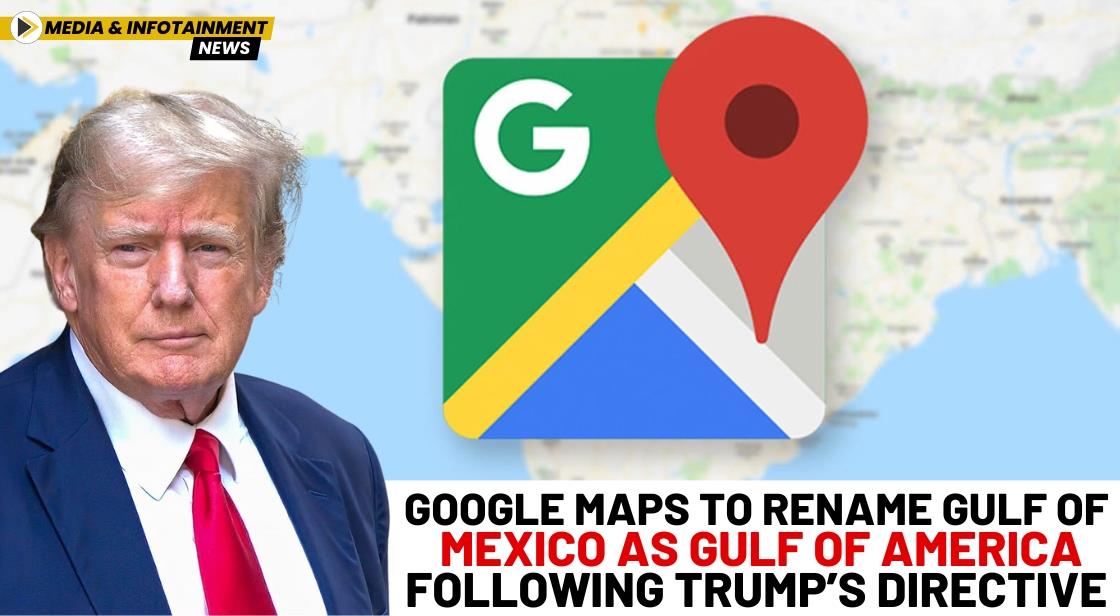Google Maps to Rename Gulf of Mexico as Gulf of America Following Trump’s Directive

News Synopsis
Google Maps users in the United States will soon notice a change in the name of the Gulf of Mexico, which will now be labeled as the "Gulf of America." This shift follows a recent directive issued by U.S. President Donald Trump, who has signed an executive order requiring several geographical landmarks to be renamed. The changes will only appear once the U.S. government officially updates its geographic listings.
Executive Order for Renaming Landmarks
The name change of the Gulf of Mexico is part of a broader initiative led by President Trump, who has ordered several landmark renamings across the country. The U.S. Department of the Interior, responsible for overseeing geographic names, confirmed that the America’s Geographic Names System is already in the process of implementing these changes.
Once the updates are officially recorded, Google Maps will adjust the names in its U.S. version accordingly. Google explained that it follows the practice of adopting name changes once they are reflected in official government sources.
Trump's Renaming Spree
This change is not an isolated case. President Trump has also been involved in other renaming decisions, including the controversial decision to revert the name of Mount Denali back to Mount McKinley.
Originally named after President William McKinley in 1917, the mountain’s name was changed to Denali by the Obama administration in 2015, restoring the original Native Alaskan name. Trump defended his decision, claiming McKinley’s actions in making America wealthy through tariffs and talent warranted the return of the name.
Trump’s Clashes with Mexico and the Gulf of Mexico Renaming
Trump’s renaming of the Gulf of Mexico is also influenced by his longstanding tensions with Mexico. During his 2016 presidential campaign and throughout his time in office, Trump has focused heavily on border security and trade tariffs, including his promise to construct a wall along the U.S.-Mexico border. The Gulf of Mexico, which borders five southeastern U.S. states, is often referred to as the U.S.'s "third coast."
In contrast, Mexico calls it "El Golfo de México" in Spanish, a reflection of the region’s importance to both countries. Furthermore, there is a naming difference regarding the Rio Grande, a major river separating Texas from Mexico, which Americans call the Rio Grande while Mexicans refer to it as the Rio Bravo.
Backlash Against the Renaming Decisions
President Trump’s renaming initiatives have faced criticism from various groups. Indigenous advocates in Alaska, for example, have strongly opposed the change to Mount Denali, arguing that the name Denali, which has been in use for thousands of years by the Koyukon Athabascans, should be preserved. Alaska’s Republican Senator Lisa Murkowski spoke out, emphasizing the cultural significance of the name Denali to Native Alaskans.
Regarding the Gulf of Mexico renaming, Mexican President Claudia Sheinbaum also mocked the decision, suggesting, "For us, it is still the Gulf of Mexico, and for the entire world, it remains the Gulf of Mexico." Her comment reflected the widespread sentiment in Mexico that the name change is politically motivated and dismisses historical and cultural importance.
Google’s Approach to Geographical Name Changes
Google Maps typically follows local naming conventions, including in disputed regions. For instance, in the case of the body of water between Japan and South Korea, it is labeled as both the "Sea of Japan" and "East Sea" in different regions. Similarly, the Persian Gulf is displayed as both the "Persian Gulf" and the "Arabian Gulf" depending on the region.
Google Maps aims to be as inclusive as possible by reflecting multiple names where disputes exist. In the case of the Gulf of Mexico and Mount Denali renaming, Google confirmed that updates will take effect once the official government records in the Geographic Names Information System (GNIS) are updated.
Conclusion: Implications of the Gulf of America Change
The renaming of the Gulf of Mexico to the Gulf of America is a contentious decision that highlights the ongoing debates over historical accuracy, political motivations, and cultural identity. While Google Maps will adopt this change once the U.S. government provides the necessary updates, the backlash from both indigenous groups and international voices suggests that the renaming process is far from straightforward. As the situation evolves, it remains to be seen how this will impact global perceptions of U.S. policies and geographical nomenclature.
You May Like









